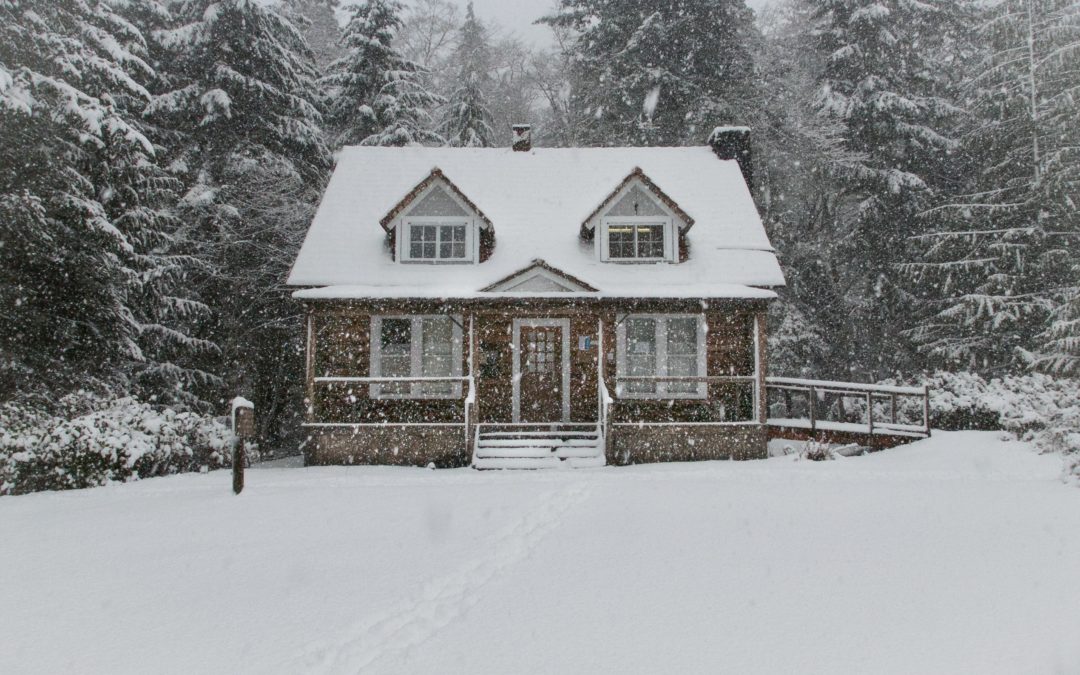Every year winter causes extensive damage throughout the U.S. A Munich Re report found nine major storms and cold waves caused $4.2 billion in losses in 2018 alone.
The following common winter home insurance claims can be costly, but here’s what you can do to avoid them.
Wind & Hail
The Insurance Information Institute reports the most frequent claims are for wind and hail. These claims account for 38.2% of all losses. Wind and hail severity ranks second overall, after fire and lightning. While no one can control Mother Nature, homeowners can certainly do many things to strengthen their home.
Surprisingly, sealing windows and doors is one of the best ways to prevent high winds from tearing the roof off your house. High winds entering through gaps create internal pressure. Contractors can also install connectors to resist damage from high winds.
Homeowners are responsible for the care and maintenance of their home’s roof too. A reputable roofing professional can assess roof condition, do minor repairs, and keep the roof in tip-top condition. They may recommend wind and hail materials when it’s time for a roof replacement too, such as hail-resistant asphalt shingles with a Class Four rating.
Homeowners should also store loose objects such as patio furniture and children’s play items that could be tossed around during a storm. Also trim tree branches away from the home and remove and dead trees or shrubs.
Water Damage & Freezing
Damage from water or freezing are the second most frequently made claims. This includes events such as frozen pipes and ice dams.
Once again, it is the homeowners’ responsibility to perform regular maintenance to mitigate risk. Otherwise, their insurance company may not cover the loss. Normal practices include draining sprinklers and faucets, insulating pipes in unheated spaces, and maintaining heat in an unoccupied property.
Ice dams may also form on the roof during the winter when a home isn’t adequately insulated, sealed, and ventilated. When snow on the roof melts and refreezes it can block gutters and force water under the shingles. Eventually, this water seeps into the interior structure.
Dwelling coverage may help pay to repair damage from an ice dam, but your personal property isn’t usually protected. Insurance policies don’t usually cover ice dam removal either.
Clearly, the best way to avoid an ice dam claim is to address problems immediately. Talk to an insulation professional to determine the source of the issue.
Other Property Damage
Snow is an issue in many parts of the country and when we get a lot of it, it can cause considerable damage. Building code varies between regions, but most homes can carry about four feet of light, fresh powder, one to two feet of packed snow, or four inches of solid ice. However, that’s only if the roof is in good order.
You can carefully remove excess snow using a roof rake to prevent roof collapse, but don’t damage the roofing materials or stand on a ladder while using one. Alternatively, call a reputable snow removal company.
Heavy snow accumulation can crush plants, your fence, carport, or shed when it falls too. Damage may be covered by the other structures coverage within your homeowner’s insurance policy. However, the limits are often low. Prevention is always the most cost-effective solutions.
Other winter problems include power failures that can ruin costly groceries, flooding due to sump pump failure, or sewer backup when snow thaws quickly. Flooding and sewer backup are not covered under a standard homeowner’s policy, but you may have some coverage for spoiled food.
Liability
Winter conditions increase the chances of visitor falls and injury. Homeowner’s insurance does provide liability coverage, but it is important to understand the limits and conditions. Lawsuits can be very costly and medical bills too.
Keeping sidewalks clear, using ice melting products, pruning away branches, and lighting pathways well can reduce your risk.
Now is a great time to review your insurance coverage with an independent insurance agency like ours. Good coverage provides the financial protection and peace of mind you need if the unexpected happens. It also ensures you can recover from winter storm damage quickly and with little fuss, even if Mother Nature throws her worst at you.


